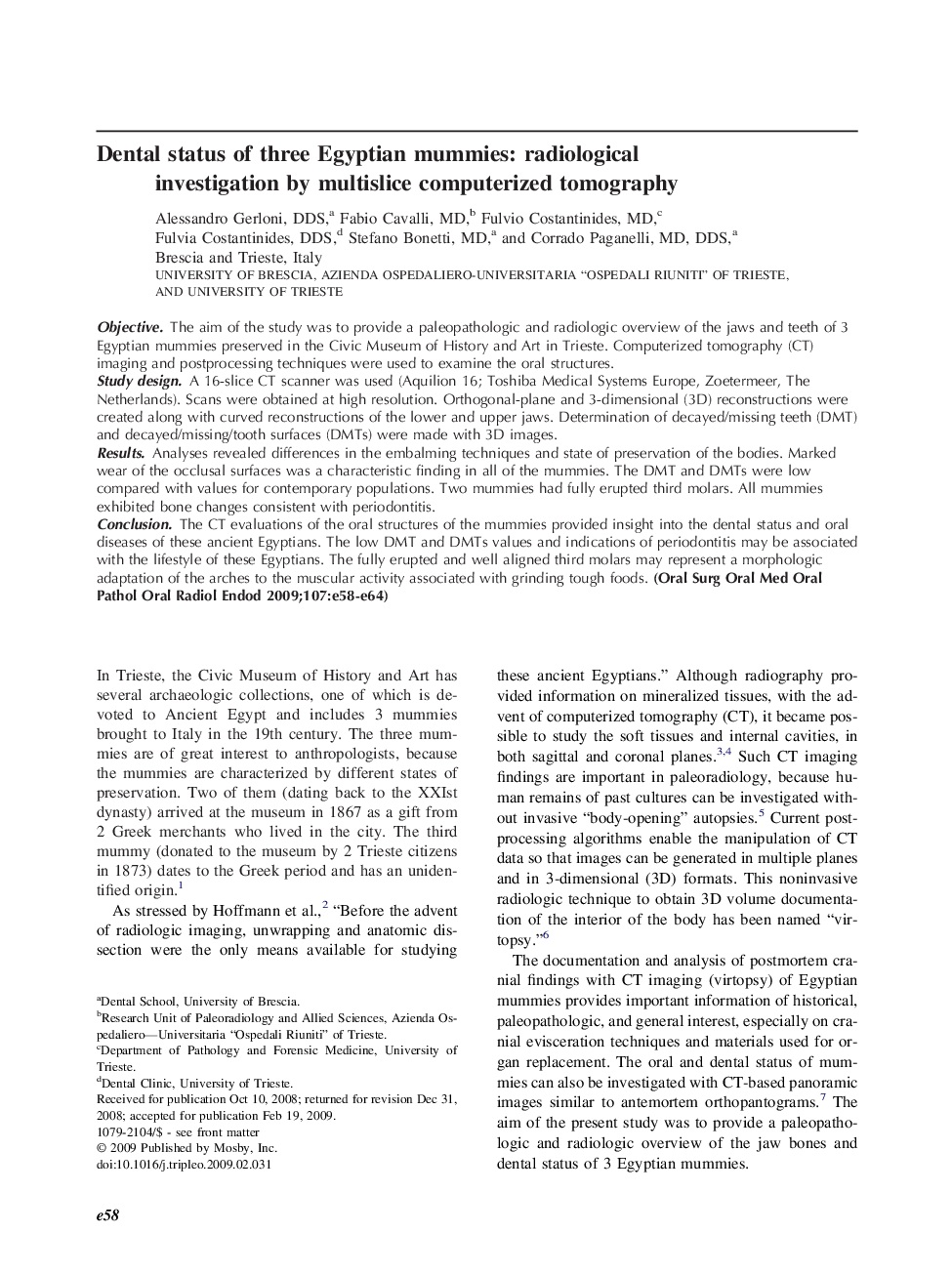| Article ID | Journal | Published Year | Pages | File Type |
|---|---|---|---|---|
| 3168044 | Oral Surgery, Oral Medicine, Oral Pathology, Oral Radiology, and Endodontology | 2009 | 7 Pages |
ObjectiveThe aim of the study was to provide a paleopathologic and radiologic overview of the jaws and teeth of 3 Egyptian mummies preserved in the Civic Museum of History and Art in Trieste. Computerized tomography (CT) imaging and postprocessing techniques were used to examine the oral structures.Study designA 16-slice CT scanner was used (Aquilion 16; Toshiba Medical Systems Europe, Zoetermeer, The Netherlands). Scans were obtained at high resolution. Orthogonal-plane and 3-dimensional (3D) reconstructions were created along with curved reconstructions of the lower and upper jaws. Determination of decayed/missing teeth (DMT) and decayed/missing/tooth surfaces (DMTs) were made with 3D images.ResultsAnalyses revealed differences in the embalming techniques and state of preservation of the bodies. Marked wear of the occlusal surfaces was a characteristic finding in all of the mummies. The DMT and DMTs were low compared with values for contemporary populations. Two mummies had fully erupted third molars. All mummies exhibited bone changes consistent with periodontitis.ConclusionThe CT evaluations of the oral structures of the mummies provided insight into the dental status and oral diseases of these ancient Egyptians. The low DMT and DMTs values and indications of periodontitis may be associated with the lifestyle of these Egyptians. The fully erupted and well aligned third molars may represent a morphologic adaptation of the arches to the muscular activity associated with grinding tough foods.
